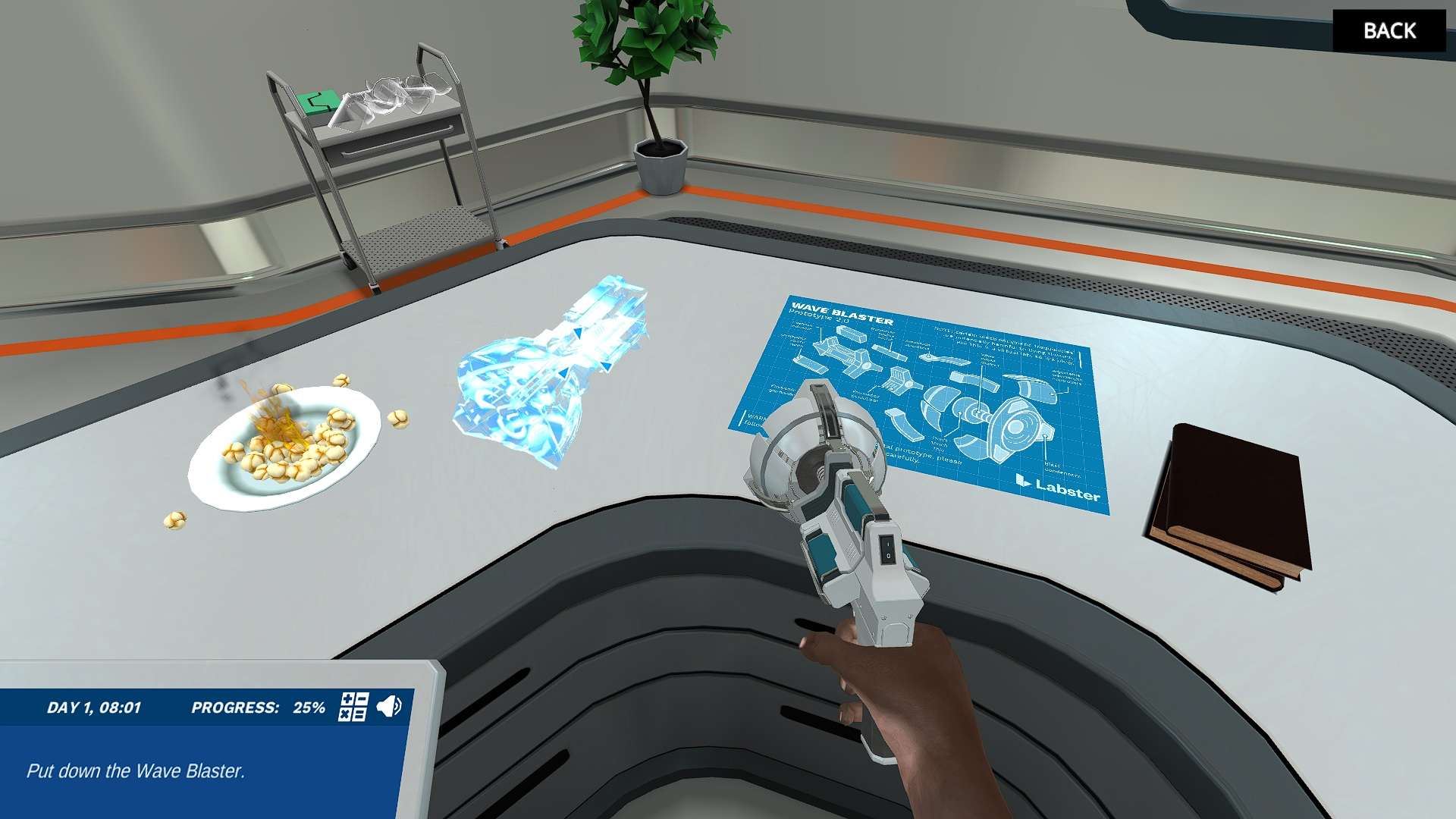Heading 1
Heading 2
Heading 3
Heading 4
Heading 5
Heading 6
Lorem ipsum dolor sit amet, consectetur adipiscing elit, sed do eiusmod tempor incididunt ut labore et dolore magna aliqua. Ut enim ad minim veniam, quis nostrud exercitation ullamco laboris nisi ut aliquip ex ea commodo consequat. Duis aute irure dolor in reprehenderit in voluptate velit esse cillum dolore eu fugiat nulla pariatur.
Block quote
Ordered list
- Item 1
- Item 2
- Item 3
Unordered list
- Item A
- Item B
- Item C
Bold text
Emphasis
Superscript
Subscript
About This Simulation
Join Dr. One for an introduction to waves. After the lab breaks, it is your job to fix it by learning about waves, their types, and parameters. Adjust the amplitude, frequency, and wavelength of the waves in the lab to finish your mission.
Learning Objectives
- Categorize real-world examples of waves as longitudinal or transverse, and standing or progressive
- Conceptually relate waves and energy
- Define wave parameters including amplitude, wavelength, period, frequency and wavespeed
About This Simulation
Lab Techniques
- Identifying wave parameters
- Wave matching
- Creating standing waves
Related Standards
- PS4.C-H1
- HS-PS4-1
Learn More About This Simulation
Dr. One has built a brand new toy for you to play with, the Wave Blaster! In this simulation, you will learn about waves, their properties, types, and how they appear in the real world. Just be careful not to blow up the lab while you’re at it.
Introduction
You will start by learning about waves and how they transport energy. Dr. One has left some popcorn out on the counter for you, so you take the brand new ‘Wave Blaster’, cook the popcorn, and demonstrate the connection between waves and energy. Everything is going well until…BOOM!
Dr. One turns the power of the Wave Blaster up with catastrophic results. The lights and sound in the lab break and need to be fixed. You must help Dr. One get the lab functioning properly again before the next student arrives. Hopefully, you can do it before anyone notices.
Lights
You move to the first display showing light waves behaving not quite as they should be. Learn about amplitude and wavelength while manually adjusting the color and brightness of lights in the lab. After this minigame, you and Dr. One will move to the next section to fix the sound.
Sounds
Dr. One shows you how sound waves travel in the lab with a detailed animation of oscillating air particles. You must create low frequency, high frequency, and standing waves to help fix the sound. Play a minigame where you must carefully select the right frequency at the right time to create your sound wave. Will you get everything back in order?
Wave speed
To finish up, Dr. One will demonstrate what waves look like as they move with a short animation of a transverse wave. You will learn about wave speed and how some waves travel faster than others. This will all make perfect sense by now since you are becoming a certified wave expert. After a mini quiz to recap your knowledge so far, Dr. One will thank you for your help and you’ll sneak out before the next student comes in. No one will ever know anything went wrong!
For Science Programs Providing a Learning Advantage
Boost STEM Pass Rates
Boost Learning with Fun
75% of students show high engagement and improved grades with Labster
Discover Simulations That Match Your Syllabus
Easily bolster your learning objectives with relevant, interactive content
Place Students in the Shoes of Real Scientists
Practice a lab procedure or visualize theory through narrative-driven scenarios


FAQs
Find answers to frequently asked questions.
Heading 1
Heading 2
Heading 3
Heading 4
Heading 5
Heading 6
Lorem ipsum dolor sit amet, consectetur adipiscing elit, sed do eiusmod tempor incididunt ut labore et dolore magna aliqua. Ut enim ad minim veniam, quis nostrud exercitation ullamco laboris nisi ut aliquip ex ea commodo consequat. Duis aute irure dolor in reprehenderit in voluptate velit esse cillum dolore eu fugiat nulla pariatur.
Block quote
Ordered list
- Item 1
- Item 2
- Item 3
Unordered list
- Item A
- Item B
- Item C
Bold text
Emphasis
Superscript
Subscript
A Labster virtual lab is an interactive, multimedia assignment that students access right from their computers. Many Labster virtual labs prepare students for success in college by introducing foundational knowledge using multimedia visualizations that make it easier to understand complex concepts. Other Labster virtual labs prepare learners for careers in STEM labs by giving them realistic practice on lab techniques and procedures.
Labster’s virtual lab simulations are created by scientists and designed to maximize engagement and interactivity. Unlike watching a video or reading a textbook, Labster virtual labs are interactive. To make progress, students must think critically and solve a real-world problem. We believe that learning by doing makes STEM stick.
Yes, Labster is compatible with all major LMS (Learning Management Systems) including Blackboard, Canvas, D2L, Moodle, and many others. Students can access Labster like any other assignment. If your institution does not choose an LMS integration, students will log into Labster’s Course Manager once they have an account created. Your institution will decide which is the best access method.
Labster is available for purchase by instructors, faculty, and administrators at education institutions. Purchasing our starter package, Labster Explorer, can be done using a credit card if you are located in the USA, Canada, or Mexico. If you are outside of North America or are choosing a higher plan, please speak with a Labster sales representative. Compare plans.
Labster supports a wide range of STEM courses at the high school, college, and university level across fields in biology, chemistry, physics, and health sciences. You can identify topics for your courses by searching our Content Catalog.















